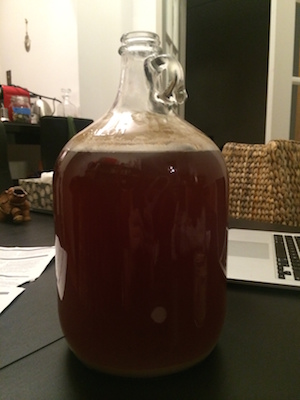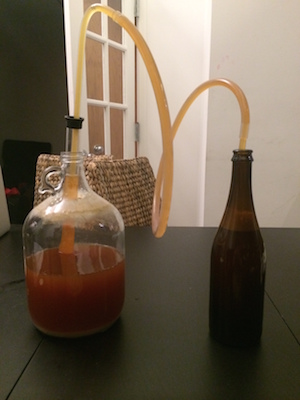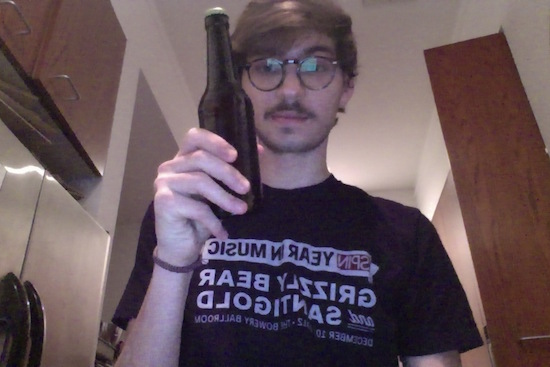DIY Beer: A New Homebrewer Tells All
It’s hard to judge homebrewing kits at the outset. Almost every craft beer lover wants to take a crack at brewing their own beer, yet rarely will “serious” craft aficionados even consider purchasing a homebrew kit. Hell, they scoff at the idea while inhaling aromas of their barrel-aged bourbon stouts, complaining that kits are kitschy and too handhold-y (admittedly, it is hard to defend the honor of a product that you can buy at Urban Outfitters). “Kitsch has to be better than messing up and wasting money” – at least, that’s what I kept reassuring myself on Christmas morning upon discovering my girlfriend’s surprise: lo and behold, a homebrewing kit. Hey, at least it wasn’t from UO.
Brewing (Day 1)
After plenty of heavy hinting from the gift giver throughout the first week of the year, I finally started brewing my first batch: the hip-ly named Dead Ringer IPA. Emptying out the kit’s array of contents, I had at my disposal brewing gear that looked like it was straight from the Breaking Bad set: Centennial hops stored in cartoonish packages labeled “Hoposaurus Rex”, a cotton mesh bag containing unknown grains, liquid malt, priming sugar, and a pack of Safale US-05 yeast. Oh right, it also came with a DVD; just like my first guitar I got from Target. The process seemed to me like it would be the brewer’s equivalent of making Betty Crocker Brownies at the outset. I soon would eat—or I guess drink—those words.
My tumultuous journey began with brewing the wort—the base of the beer. It’s essentially like making a gallon of barley tea, and you’d think steeping tea isn’t that hard. That’s probably true if you aren’t neurotic like me asking yourself questions like these: “Did I put them in too soon? Is it dark enough? Why is there gunk floating around?” For some reason, my inner brewing skeptic wouldn’t quit. Sure, it wasn’t like there was pressure for me to make an award-winning brew, but I wanted to make something that was at least drinkable.
Things got slightly easier when I started adding hops…and then things got worse. After pouring in the entire bottle of sticky-sweet malts and the first batch of Hoposaurus Rex, my main task in brewing was to watch the clock on my iPhone and add subsequent amounts of hops according to the intervals allotted by the instruction. Really though, I just watched a bunch of Friends episodes, trying to sync up Rachel and Ross moments with hop drops. To my surprise, they lined up pretty well. Unfortunately though, when cooling the brew in an ice bath, Ross and Rachel’s relationship troubles surprisingly proved to be more captivating than eying the thermometer. The brew overcooled—a factor that may or may not have made my Dead Ringer IPA a Deader Ringer.
Cradling my icy jug on the kitchen floor and praying to the beer gods I didn’t screw up, the brew eventually hit room temperature and was ready to be siphoned for fermentation. As this young brewing novice soon learned from the instructions, sanitizing is the most important part of brewing; it’s also pretty much the most annoying. Bolded, CAPITALIZED, even underlined…the instructions took sterilizing the equipment seriously, even requiring me to clean off the scissors that I would use to cut open the yeast packet. It was as if just touching the gear would completely ruin the beer. I was hopeful that wouldn’t be the case.
Siphoning the beer into the jug, the brew—now a sludgy honey brown hue—shot out into the jug like sewage water. With my girlfriend acting as a second pair of hands and helping me balance the one-gallon jug to avoid contaminating the gear, I managed to circumvent most of the creamy sediment sitting ominously at the bottom of the jug, and finished the last leg of the process in just under five minutes. After a christening with yeast and capping the jug with the autolock, my brew found itself filling a nice and cozy niche in my closet, the jug squeezed between last year’s tie-dye kit and my girlfriend’s pile of stuffed animals.
-

-

-

-

-

-

-

-

-

-

-

-

-

-

-

-

-

-

-

-

-

-

-

-

-

-

-

-

-

-

-

-

-

-

-

-

-

-

-

-











































